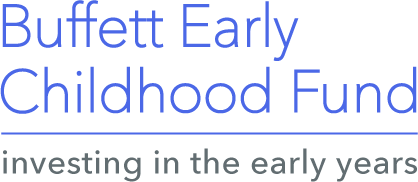Interactive Tools
Interactive Tools
Welcome to our interactive tools section. We have collected eight innovative tools developed by various organizations. Explore these interactive tools to better understand the early childhood policy landscape and drive meaningful change.
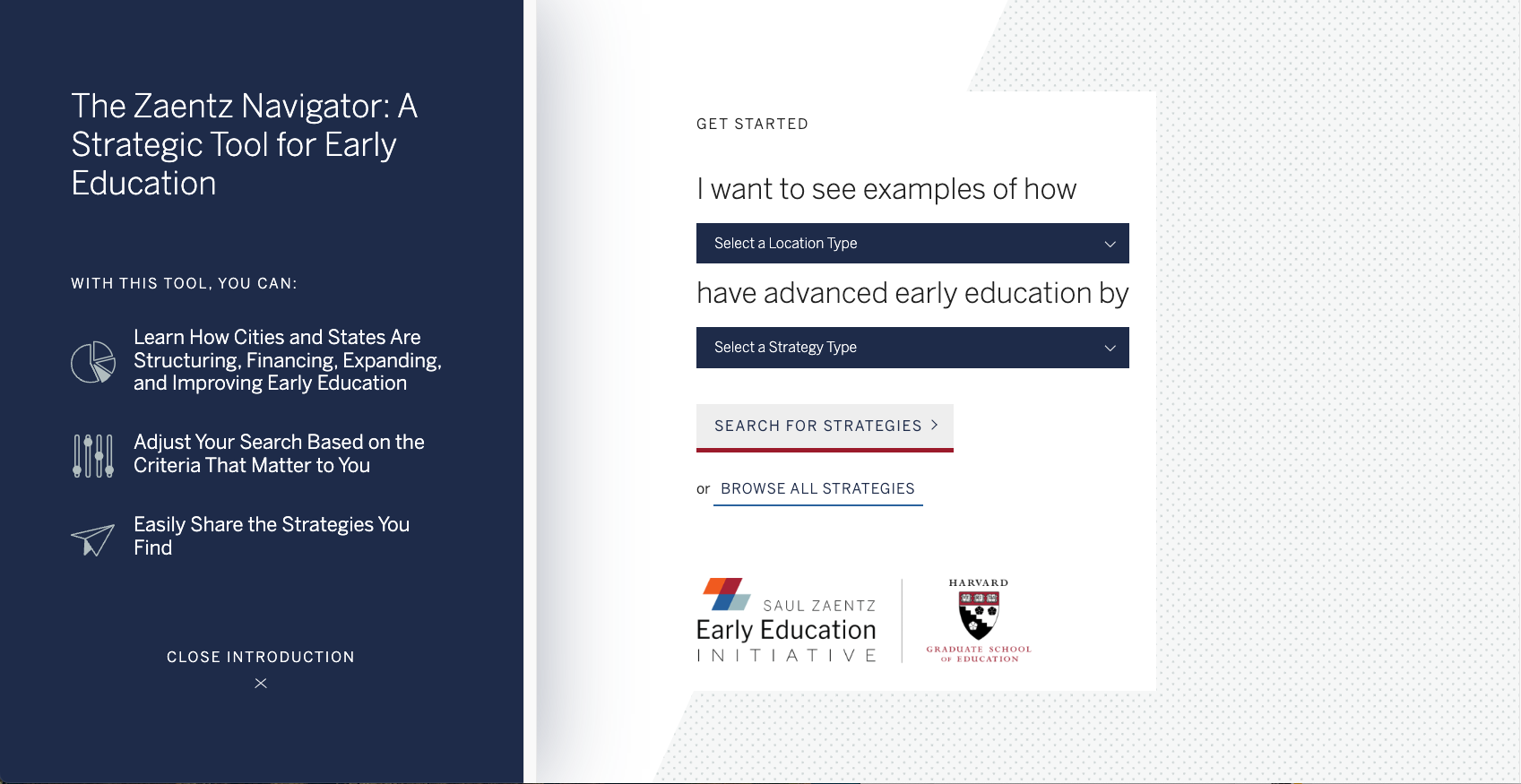
The Zaentz Navigator
The Zaentz Navigator shows how cities and states are tackling common issues as they structure, finance, expand, and improve early education and care. It shows policy strategies and innovations across five categories: Infrastructure + Systems, Dedicated Funding Streams, Cost Estimation for Subsidies, Expansion, and Workforce.
The Saul Zaentz Early Education Initiative. (2023). The Zaentz Navigator.
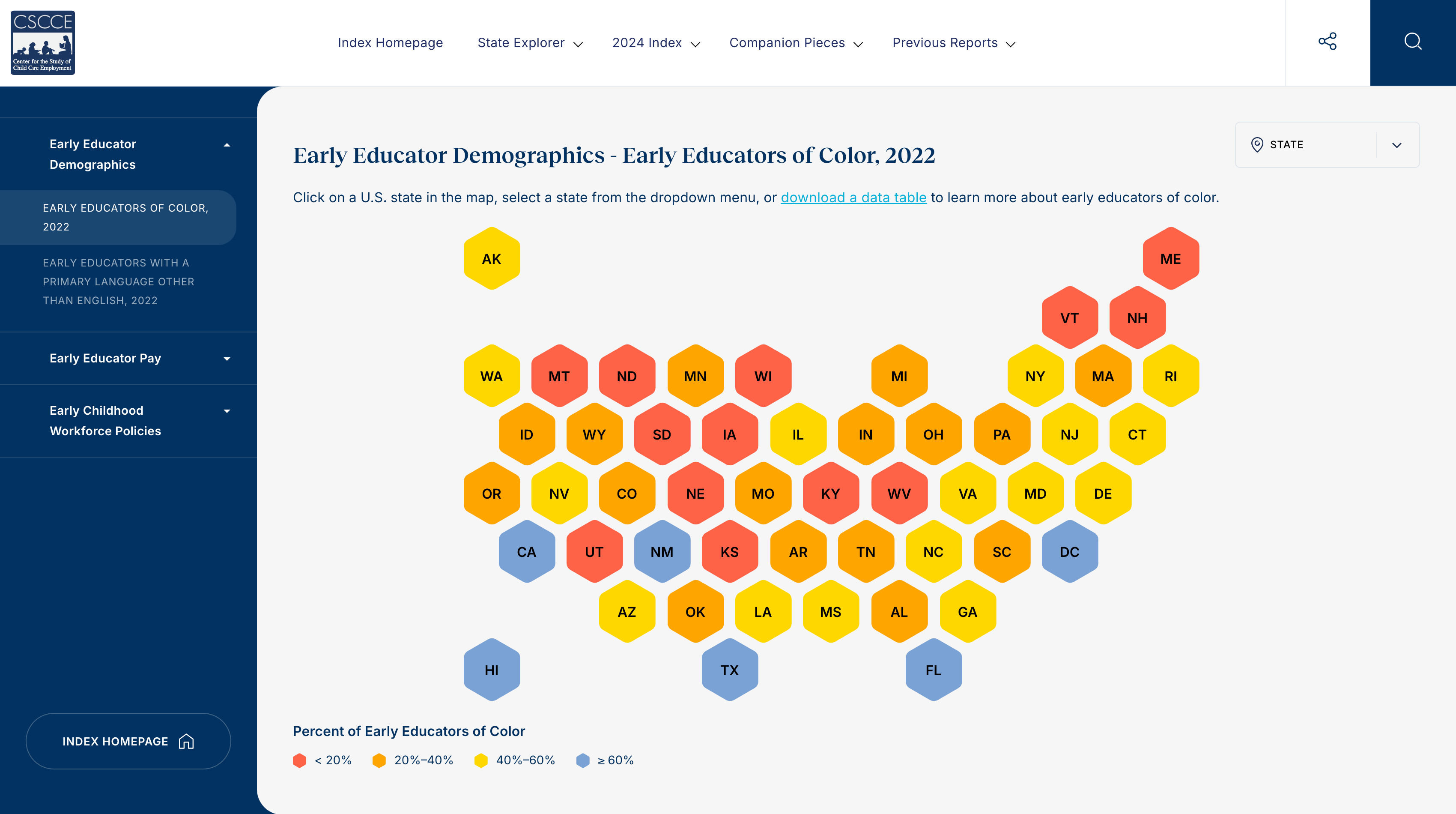
Early Childhood Workforce Index Interactive Map
The Center for the Study of Child Care Employment created the Early Childhood Workforce Index Interactive Map. It shows early childhood workforce conditions and policies across all 50 states and the District of Columbia.
Center for the Study of Child Care Employment (CSCCE). (2024). Early Childhood Workforce Index.

Child Care Deserts Map
The Center for American Progress and researchers from the University of Minnesota created the Child Care Deserts Map. The map shows the density of families with young children and an index of child care supply within a 20-minute drive. Users can analyze the inequalities associated with child care deserts. Then they can compare how those inequalities affect specific populations, such as Black families, Hispanic families, and families living in poverty.
Center for American Progress (CAP). (2020). U.S. Child Care Deserts.
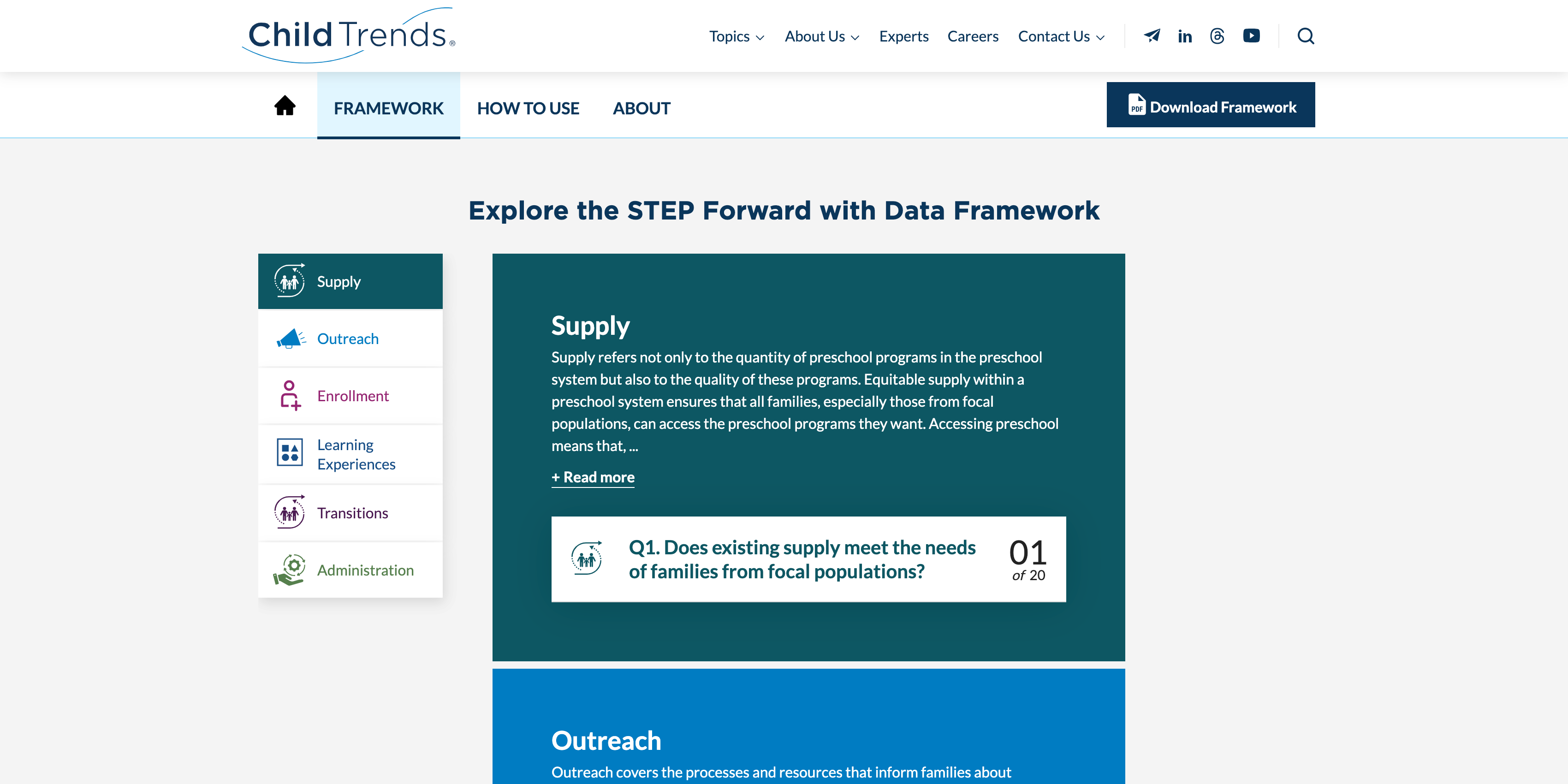
System Transformation for Equitable Preschools (STEP forward with Data) Framework
The System Transformation for Equitable Preschools (STEP Forward with Data) Framework is designed to help preschool system leaders use data to promote greater equity at every step of the preschool system. In using this Framework, leaders will better understand the experiences of children, families, or workforce members within their systems to begin identifying potential inequities and examine root causes that could be addressed. The Framework organizes 20 essential questions into six preschool steps (click here for an overview). The steps align with points at which a child, family, or workforce member may face inequities and at which a preschool system leader could make actionable changes to improve quality and access to equitable preschool experiences.
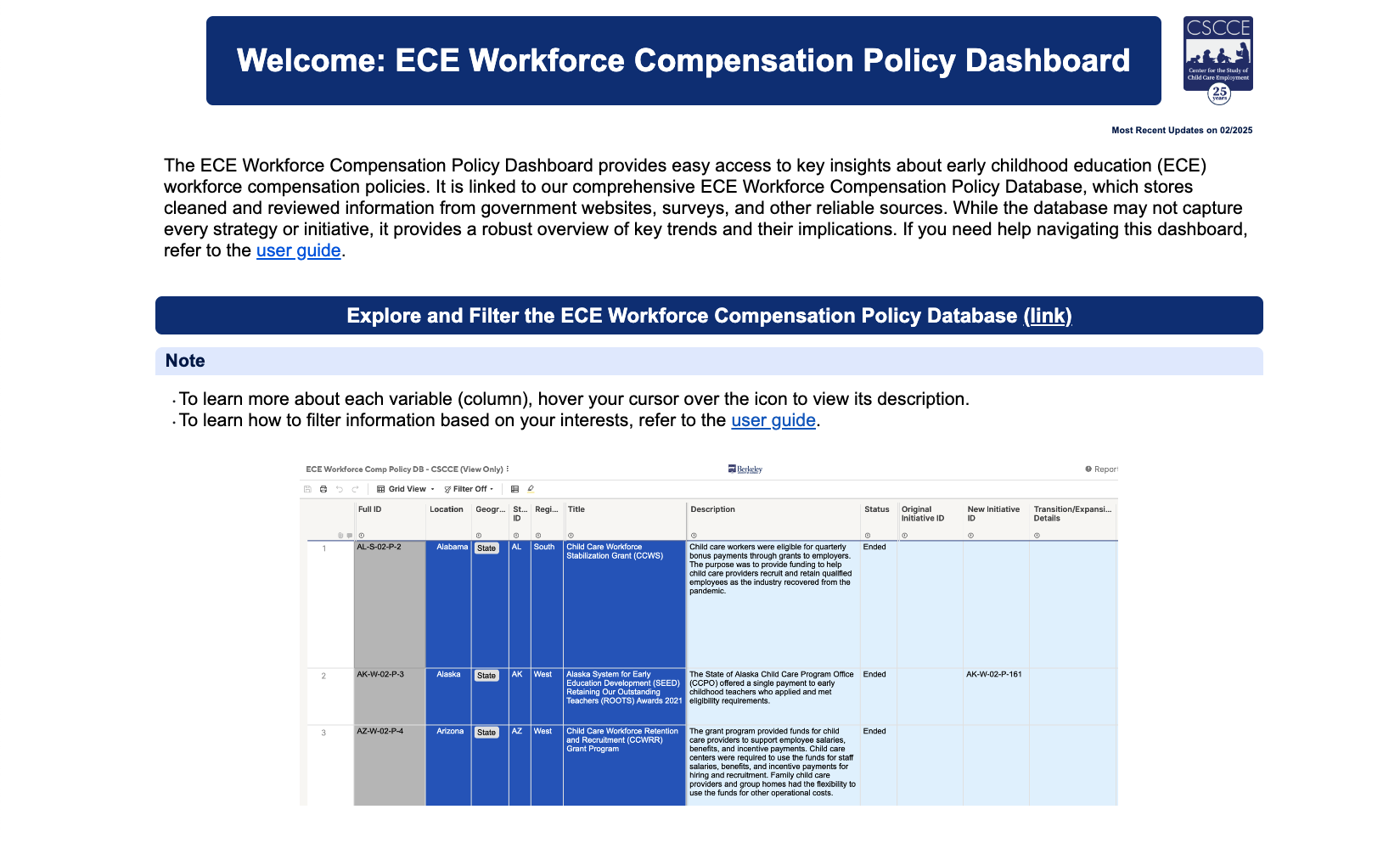
The ECE Workforce Compensation Policy Database
The ECE Workforce Compensation Database tracks what states and local areas are doing to improve pay for early childhood educators. It collects detailed information from many sources to help shape better policies. The Dashboard shows trends in pay efforts using easy-to-read graphs and charts. Together, they provide useful data to support research, guide policy changes, and help plan for a stronger early education workforce.
Center for the Study of Child Care Employment, University of California, Berkeley. (2025). ECE Workforce Compensation Policy Database.
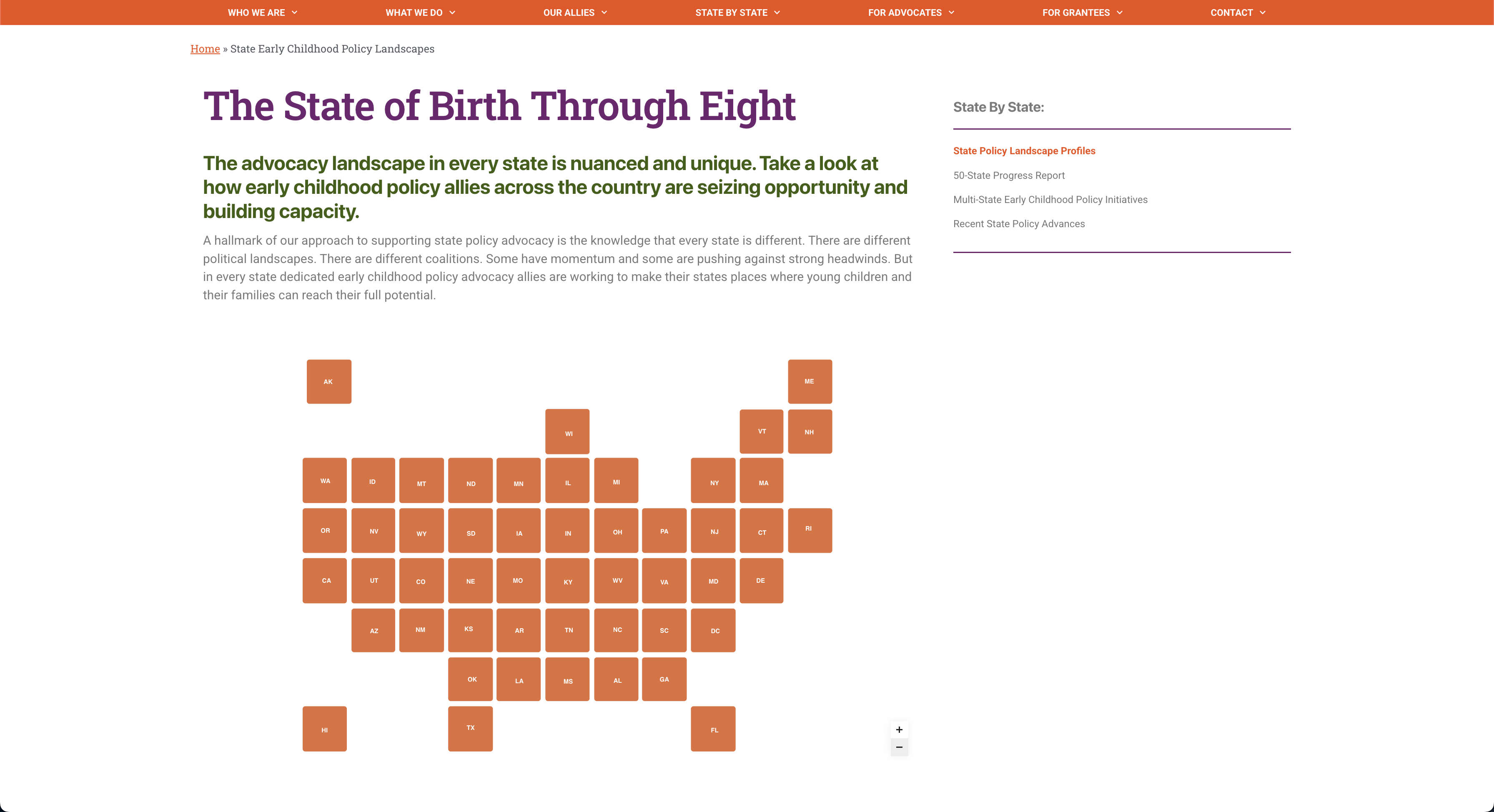
State Early Childhood Policy Landscapes
Explore how early childhood policy advocates across the country are driving change. This tool provides insights into state-level advocacy efforts, highlighting opportunities, challenges, and coalition-building strategies. Learn how different states are navigating political landscapes to support young children and families—and find inspiration for advancing early childhood policies in your own community.
Alliance for Early Success. (2024). State Early Childhood Policy Landscapes.
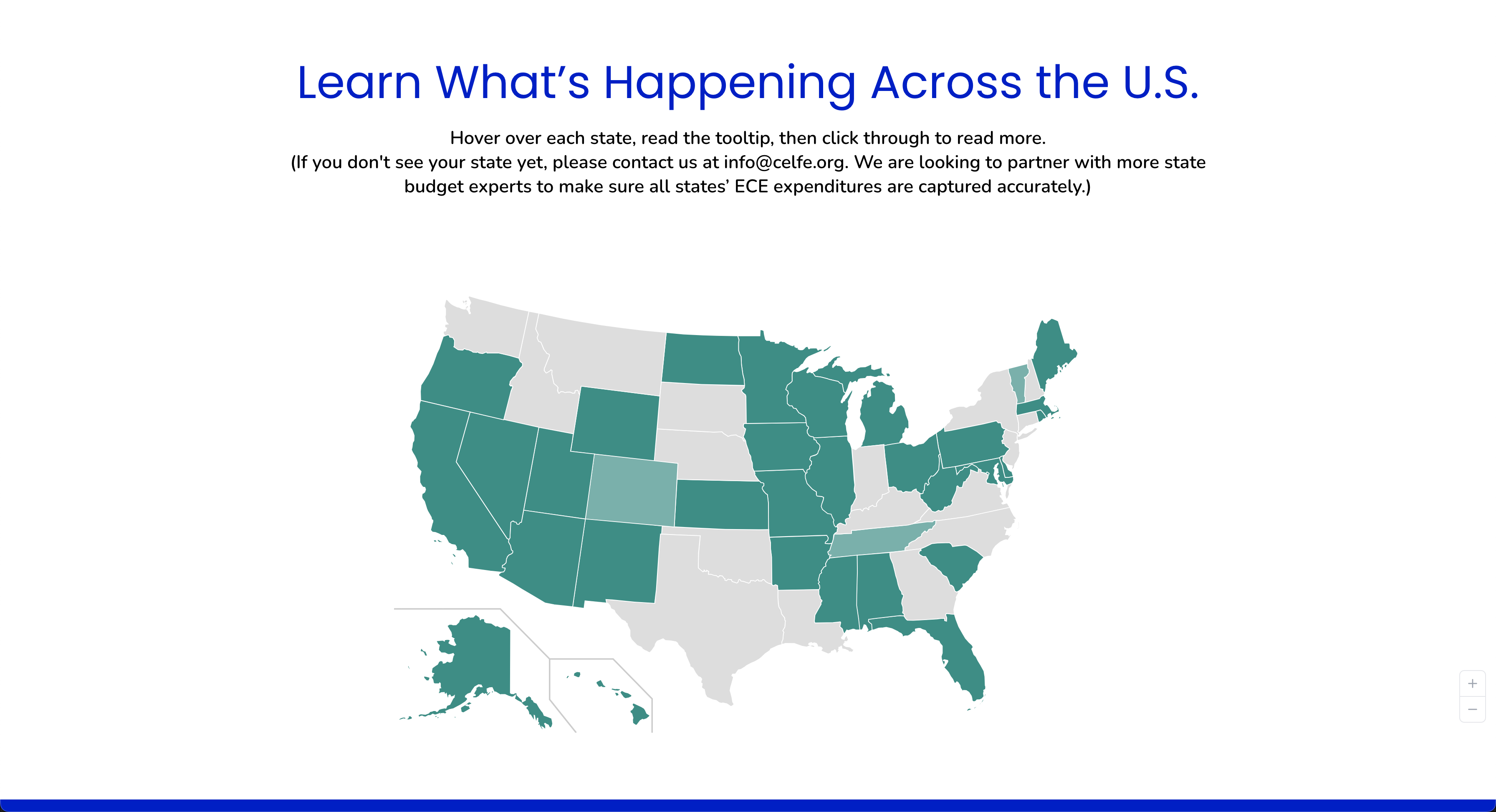
The Shortchanged Project
The Shortchanged Project aims to analyze all early learning funding streams together and chronicle how much—or little—is spent on the care and education of children before they enter elementary school nationally, state-by-state, and over time. This varies considerably among states, which the Shortchanged Project is also working to capture (see the map tab for state specific expenditures). However, in every state, early learning remains shortchanged.
The Shortchanged Project. Center for Early Learning Funding Equity, Northern Illinois University. Chicago, Illinois. (2024).

Data on Child Care and Early Learning in the United States
The Center for American Progress has released its data dashboard on Child Care and Early Education in the United States for 2023–2024. This interactive tool provides national and state-level insights on key child care and early education trends, including child care costs, accessibility, and Head Start participation. Users can explore data visualizations and compare trends across states to better understand the landscape of early learning nationwide.
Center for American Progress (CAP). (2024). Data on Child Care and Early Learning in the United States.


